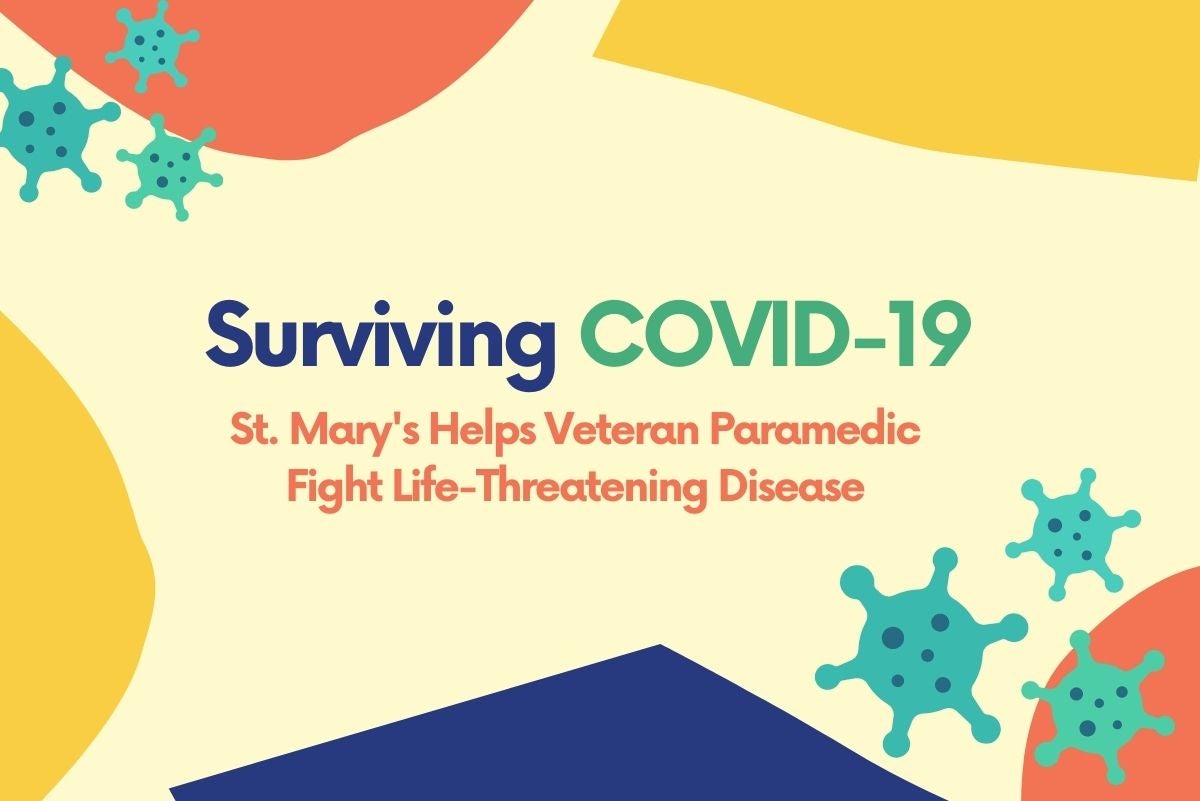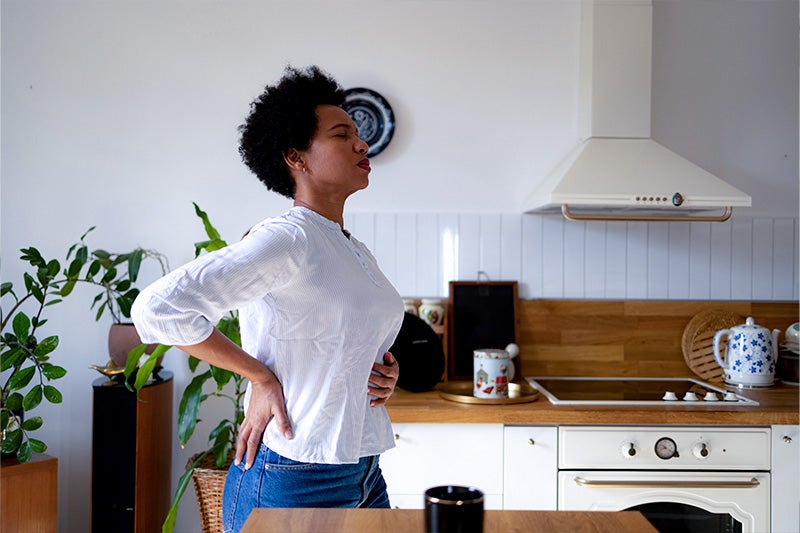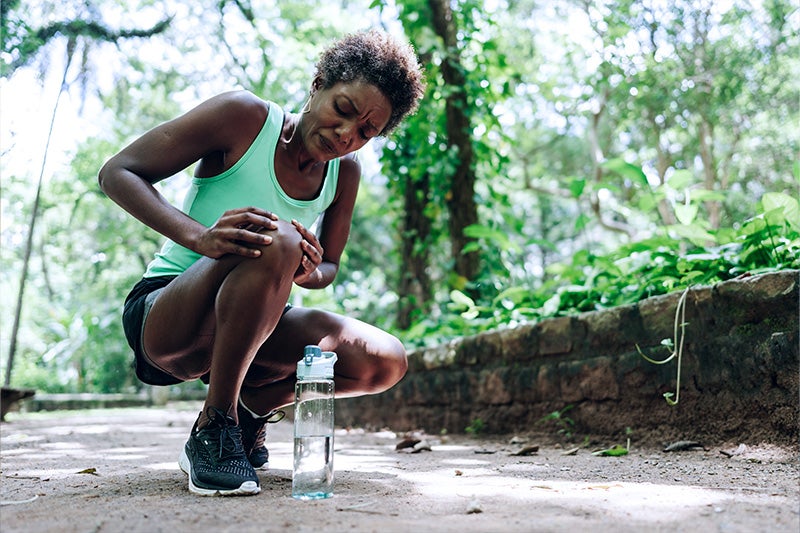St. Mary's Helps Veteran Paramedic Fight Life-Threatening Disease
After 48 years working on an ambulance as a paramedic, not much catches Ronnie Franklin off guard. So, it was a shock last summer when COVID-19 hit him so hard he had to be airlifted to St. Mary’s.
It was even more of a shock when he and his wife, Angela, learned that the same day Ronnie was airlifted to St. Mary’s, his mother was also hospitalized for COVID-19. Mother and son spent weeks a couple of doors apart in St. Mary’s Intensive Care Unit.
“I have a lot of gratitude for St. Mary’s,” says Angela, who works as a paramedic and nurse in Putnam County. “The people there took really good care of them. We had other friends from Monticello who didn’t survive. I feel blessed that Ronnie and his mother both pulled through.”
Ronnie’s COVID journey started on July 17, 2020. In all, he spent 112 days in four hospitals. His journey is not unique and shows how serious a COVID-19 infection can be. Both he and his mother are home and much better, grateful to be alive but still working through the ways in which the disease has changed their lives forever.
The Odyssey Begins
Angela recalls the day it started. As COVID’s “summer wave” surged in Georgia, both she and Ronnie had gone to work that morning – Ronnie with EMS in Macon, Angela with EMS in Putnam County. At mid-morning, he called to say he wasn’t feeling well and was heading to their Monticello home. That afternoon, a teenaged granddaughter checked on Ronnie and let Angela know he had a slight fever – 100.2. A few hours later, she called Angela again: His fever had climbed to 102.8 and he was having trouble breathing.
The just-licensed granddaughter drove Ronnie to the Emergency Department at Putnam General Hospital, where Angela has her second job as an emergency nurse. A chest x-ray showed tell-tale signs of COVID-19. They admitted him immediately. Over the course of the next week, his condition worsened. His doctors started him on Remdesivir but the virus continued damaging his lungs.
“His oxygen saturation continued to drop,” Angela said, referring to the amount of life-giving oxygen carried by the blood. “They started him on oxygen but on Sunday his heart rate was over 200 (beats per minute) and they had to intubate him. They flew him to St. Mary’s on July 26.”
In St. Mary’s ICU, doctors and nurses worked around the clock to support his breathing. They continued his Remdesivir treatments, put him on a ventilator (a machine that pushes air into the lungs and pulls it out again), and also pronated him (positioning him face-down, which studies were beginning to show can help some patients with severe COVID-19 disease). Nothing worked. Ronnie’s oxygen levels continued to decline.
Down But Not Out
His doctors at St. Mary’s felt there was only one therapy that might save his life, but very few hospitals have the capability: ExtraCorporeal Membrane Oxygenation, or ECMO. ECMO temporarily takes over the work of the heart and lungs. The hope was that it would allow his COVID-ravaged lungs to heal while meeting the oxygen demands of his body. His doctors found one available unit at Piedmont Hospital in Atlanta. The doctors there agreed to admit him.
Ronnie received ECMO therapy from Aug. 12 to Aug. 30, then returned to St. Mary’s. His condition was better, but he still struggled to breathe and could not eat, so he remained on a ventilator and feeding tube (he lost 75 pounds during his illness, Angela notes). On Sept. 3, his carbon dioxide levels started to rise. It was not a good sign: it meant his lungs were having trouble removing the toxic gas from his blood so that he could exhale it.
“The doctors decided to try using steroids again to reduce the inflammation,” Angela said. “That was also the day they let me come in to see him for 10 minutes. From then on, he started getting better.”
When he no longer needed ICU care, Ronnie moved to Landmark Rehabilitation Hospital in Athens to continue his recovery, and then returned to Putnam General, where he stayed until he was able to go home on Nov. 5.
“I vaguely remember bits and pieces of it,” he says. “Angela kept a play-by-play, day-by-day diary. To read it now is interesting, especially to see where she was and how she was feeling. It was so hard on her.”
An Unexpected Connection
“The nurses and doctors at St. Mary’s were awesome,” Angela says. “I couldn’t have asked for anybody to be kinder or more informative. It was the little things. There were times when I knew they were busy but they asked if I wanted to Zoom® with him. They would stop what they were doing so I could have some peace of mind. They even asked me to send them family photos that they blew up and hung from the ceiling so that he could see family when he was awake and not pronated.”
“It helped a lot to see pictures of family,” Ronnie notes. “It gave me something to live for.”
Those pictures are how his care team learned that he and his mother were two doors apart in the ICU.
“One day one of my nurses was looking at the pictures and recognized one of them,” Ronnie says. “She asked, ‘Is this your mother?’ and I said, yes, and she said, “She’s here, too!”
Dorothy Franklin was just down the hall, but with visitation impossible because of COVID-19, no one had realized the two Franklins were related. Ronnie and Dorothy were able to send messages to each other through staff, and later were able to visit each other. Even though she was 81 and spent 71 days in the hospital, her recovery was faster than Ronnie's and she went home before her son did. Angela says she still has some trouble with shortness of breath, but is happy to be home.
"She has a big personality," Angela adds. "She kept them laughing up in the ICU."
Today, Ronnie continues to recover, but it's a slow process. He gets out of breath easily and is working with his medical team to maximize his pulmonary function. He's not sure when – or if – he will be able to go back to work. Right now, he just thanks God that he is alive and home.
“We’re blessed,” Angela agrees.
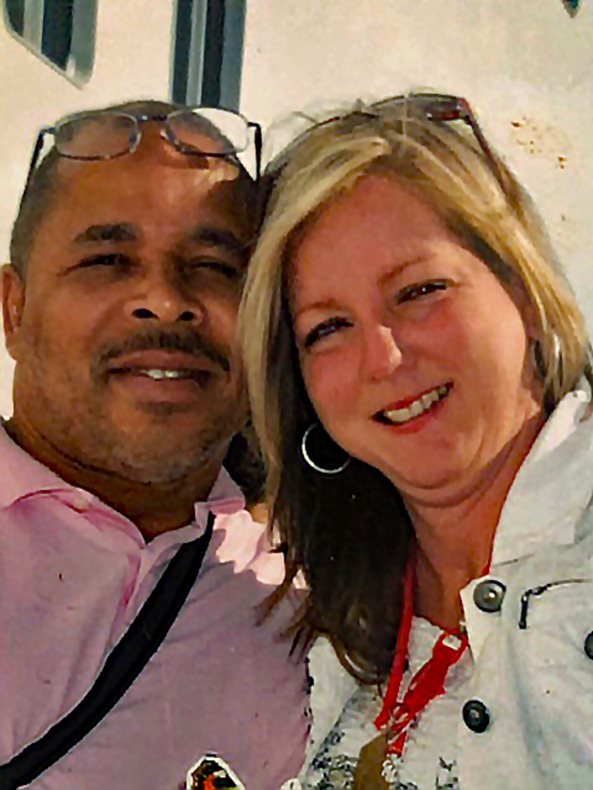
Ronnie and Angela before he contracted COVID-19. The veteran paramedic spent 112 days in four hospitals fighting the disease.
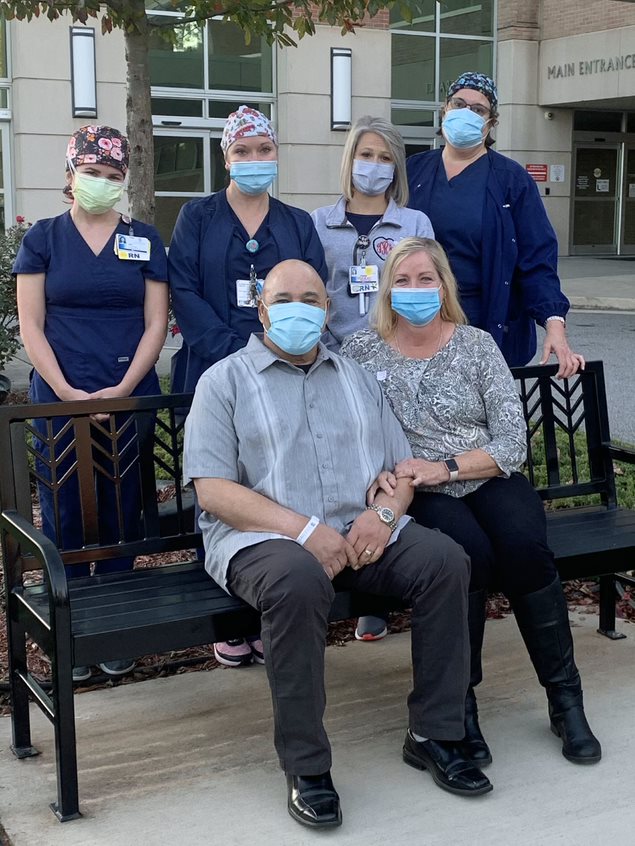
Ronnie and Angela (seated) pose for a photo with St. Mary's nurses Amy Chilton, Haley Faulkner, Tricia Reid and Diane Vance during a post-discharge pulmanology follow-up visit.
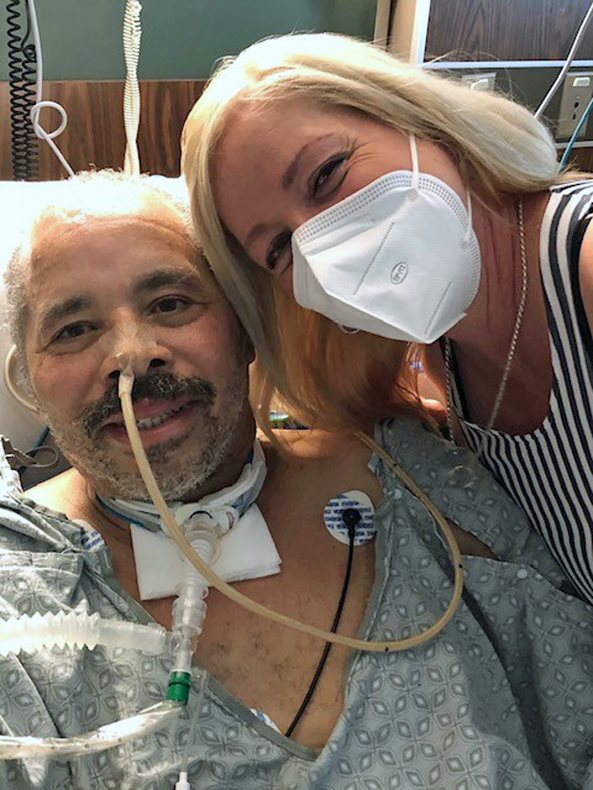
Ronnie and Angela pose for a selfie as he recovers from the worst effects of his COVID-19 infection.
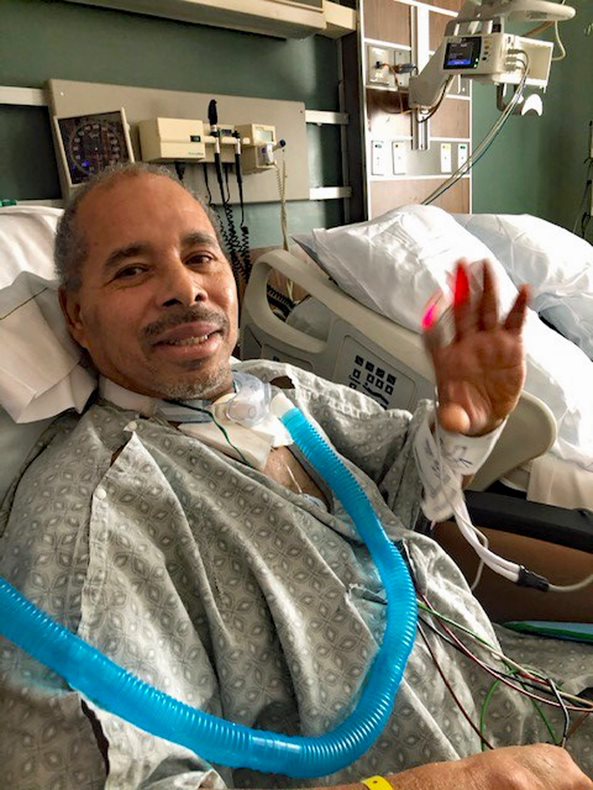
Ronnie required breathing assistance for much of the time he was hospitalized with COVID-19. Here, his recovery has progressed to the point that he can sit in a chair and enjoy a brief visit with Angela.
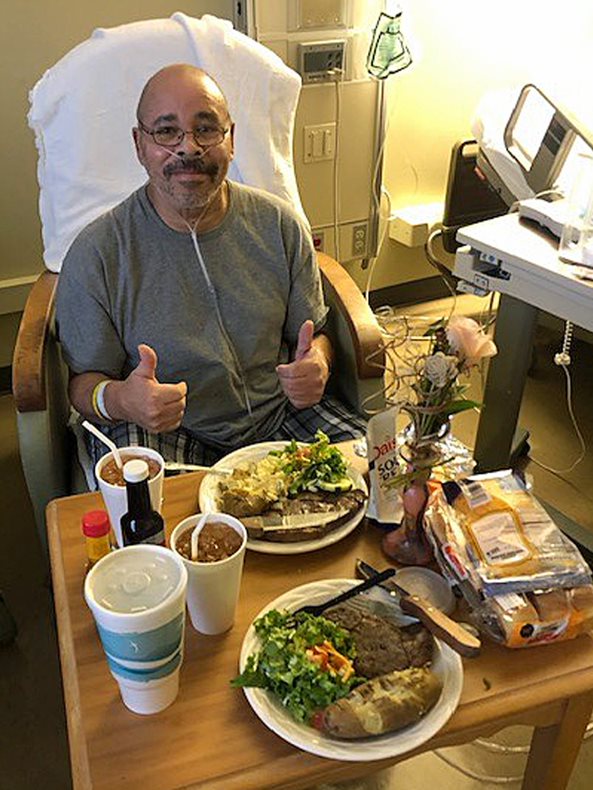
Able to breathe without a ventilator and eat real food, Ronnie prepares to tuck into a celebration meal with Angela near the end of his hospital journey.
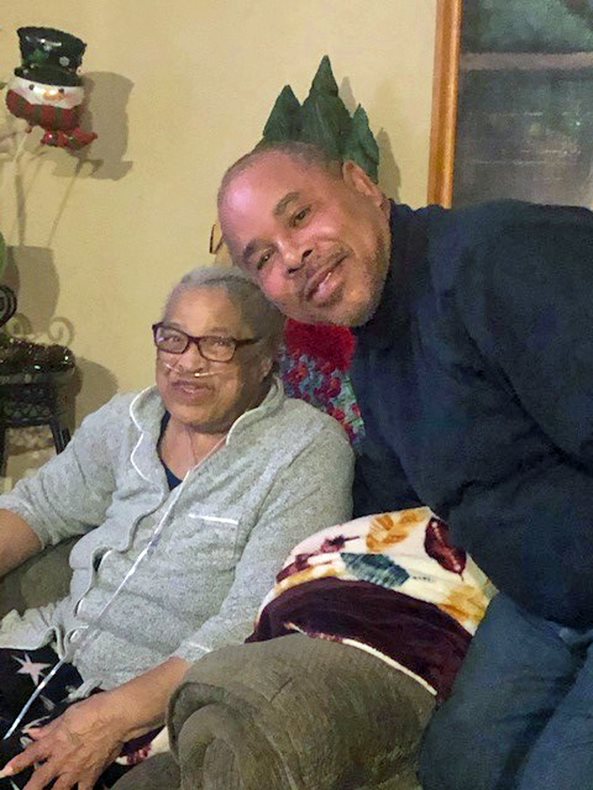
Ronnie and his mother, Dorothy Franklin, in a pre-COVID photo. Both survived serious COVID-19 infections, and for a few weeks were almost next-door neighbors in St. Mary's ICU.

